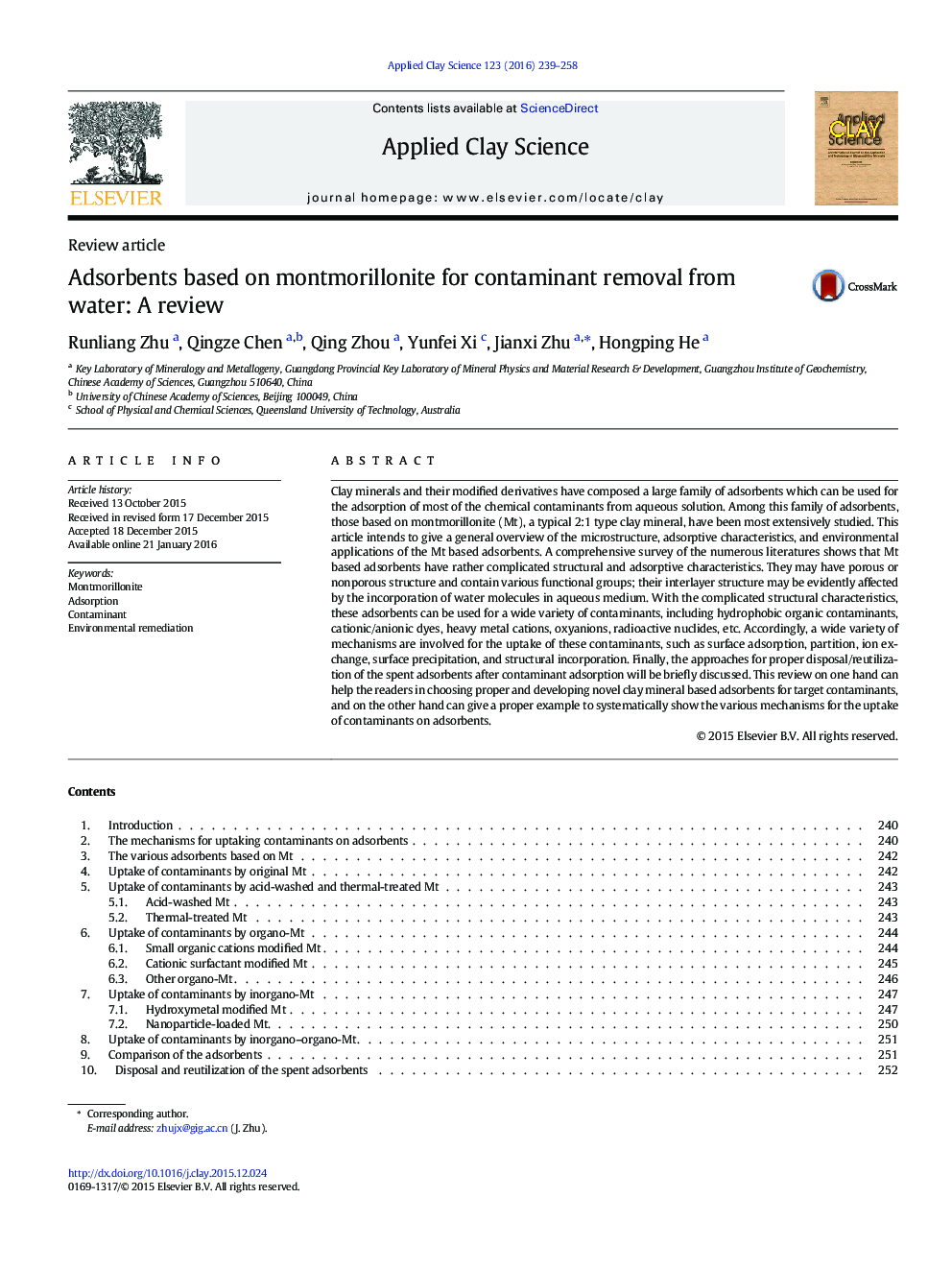| Article ID | Journal | Published Year | Pages | File Type |
|---|---|---|---|---|
| 1694110 | Applied Clay Science | 2016 | 20 Pages |
•A diversity of adsorbents can be synthesized using Mt.•Mt based adsorbents can uptake most chemical contaminants.•Adsorption of contaminants on Mt based sorbents involves various mechanisms.•The spent adsorbents after application can be recycled or reutilized.
Clay minerals and their modified derivatives have composed a large family of adsorbents which can be used for the adsorption of most of the chemical contaminants from aqueous solution. Among this family of adsorbents, those based on montmorillonite (Mt), a typical 2:1 type clay mineral, have been most extensively studied. This article intends to give a general overview of the microstructure, adsorptive characteristics, and environmental applications of the Mt based adsorbents. A comprehensive survey of the numerous literatures shows that Mt based adsorbents have rather complicated structural and adsorptive characteristics. They may have porous or nonporous structure and contain various functional groups; their interlayer structure may be evidently affected by the incorporation of water molecules in aqueous medium. With the complicated structural characteristics, these adsorbents can be used for a wide variety of contaminants, including hydrophobic organic contaminants, cationic/anionic dyes, heavy metal cations, oxyanions, radioactive nuclides, etc. Accordingly, a wide variety of mechanisms are involved for the uptake of these contaminants, such as surface adsorption, partition, ion exchange, surface precipitation, and structural incorporation. Finally, the approaches for proper disposal/reutilization of the spent adsorbents after contaminant adsorption will be briefly discussed. This review on one hand can help the readers in choosing proper and developing novel clay mineral based adsorbents for target contaminants, and on the other hand can give a proper example to systematically show the various mechanisms for the uptake of contaminants on adsorbents.
Graphical abstractFigure optionsDownload full-size imageDownload as PowerPoint slide
